
UNC O RKED
UNCORKED
The Science of Champagne
REVISED EDITION
GRARD LIGER-BELAIR
With a new foreword by Herv This and a new afterword by the author
PRINCETON UNIVERSITY PRESS  Princeton & Oxford
Princeton & Oxford
Copyright 2004 by Princeton University Press
Published by Princeton University Press, 41 William Street, Princeton, New Jersey 08540
In the United Kingdom: Princeton University Press, 6 Oxford Street, Woodstock, Oxfordshire 0X20 1TW
press.princeton.edu
All Rights Reserved
First printing, 2004
Second printing, 2013, with a new foreword by Herv This and a new afterword by the author.
ISBN 978-0-691-158723
Library of Congress Control Number 2013933622
THE LIBRARY OF CONGRESS HAS CATALOGED THE FIRST EDITION OF THIS BOOK AS FOLLOWS:
Liger-Belair, Grard, 1970
Uncorked : the science of champagne / Grard Liger-Belair.
p. cm.
Includes bibliographical references and index.
ISBN 0-691-11919-8 (cloth : acid-free paper)
1. Champagne (Wine). I. Title.
TP555.L54 2004
641.2224dc22 2004044604
British Library Cataloging-in-Publication Data is available
This book has been composed in Perpetua and Centaur
Printed on acid-free paper
pup.princeton.edu
Printed in the United States of America
1 3 5 7 9 10 8 6 4 2
To my father, Jacques
CONTENTS
FOREWORD
The Philosophy in a Bottle of Wine
A bottle of wine contains more philosophy than all the books in the world, said the French microbiologist Louis Pasteur, whose father was a winemaker in the Jura, that wonderful place where the famous vin jaune (yellow wine) is made. But, by philosophy, did Pasteur mean metaphysics or natural philosophy?
In the days of Galileo Galilei, Isaac Newton, and Michael Faraday, natural philosophy was the name given to what we now know as science. In the years since, natural scientists have opted to abandon the term natural philosophy, so as to distinguish their field from more theological and metaphysical pursuits. They have in addition delineated the scientific disciplines of chemistry, physics, biology, and others (thus erecting artificial barriers between these disciplines, which all share the same goalthat of lifting up a corner of the great veiland share as well as the same method of investigationthe celebrated scientific method.) However, the truth in Pasteurs statement remains; the simplest glass of wine is a theater of natural phenomena, and these phenomena beckon to scientists, just as Mount Everest calls to other adventurersinviting them to climb, to explore, to discover And when the wine is not still but sparkling, the prospect of exploring the mechanisms of this phenomenon is even more intriguing. The inner world of sparkling wine is the summit that Grard Liger-Belair has chosen to climb in his researchand in this book.
Molecular Gastronomy: From Souffls to Champagne Bubbles
Such a journey of exploration as Liger-Belair has embarked upon was not possible fifty years ago. Indeed, in 1964, the publication of an article on sauce hollandaise in the journal Nature was considered the height of eccentricity. (It probably would have won the Ig Nobel Prize, if the prize had existed then, just as a study of dipping biscuits in tea was awarded this prize more recently.) It was not until the field of Molecular and Physical Gastronomy (since shortened to Molecular Gastronomy) came into being, that people began to recognize that food could be investigated using the methods of science.
But what exactly is food? To my mind, it is not something intangible, an idea that we can discuss in the abstract. It is what we eat and drink. A carrot in a field is not food; a grape in the vineyard is not food; raw meat is not food But beef cooked with carrots, cassoulets, French fries, foie gras and champagne in a glassthese are food. And they can be studied scientifically, i.e., using the scientific method. This is why it is so important to make a distinction between food ingredients, industrial food processes, culinary transformations, and the food, or dishes, that we eat and drink. Alongside the science and technology of food ingredients, and the technology of industrial food processes, we have a science and a technology of culinary transformations, and of food. This is exactly what Molecular Gastronomy is. And, although the first studies of this discipline focused on the mysteries of airy souffls, more recent studies need to consider dishes and drinks of all kindsincluding champagne and its beguiling bubbles.
Let Us Play with Food
The word science was stolen by the practitioners of the so-called hard sciences (chemistry, physics, and the like). At one time, books bore such titles as the science of cooking, using the term science in a broad sense to mean knowledge. Since today we need to distinguish the hard sciences from activities in pursuit of knowledge that lack a quantitative underpinning, I think we might do well to resurrect the term natural philosophy and apply it to those studies in the realm of food that are not technological; i.e., that do not have to do with improving techniques using the results of scientific investigations.
Liger-Belairs research on champagne bubbles, the subject of this book, is the kind of exploration that, to my mind, belongs to natural philosophy, albeit his results can be readily applied. And, their applications are intriguing If we understand why bubbles form in champagne, how they evolve, and how they explode, we can begin to conceive of ways to control and improve upon these phenomena, so as to create even more marvelous champagnesand other drinks as well. Champagne is a wonderful drink, of that there can be no doubt. But there are poor champagnes as well as good champagnes (and indeed some truly remarkable ones). The real world contains many champagnes. If we assume that everything on this Earth is imperfect by nature, it remains for us to see how we might make improvements. So, let us play with champagne. Let us try to make it even better, to improve its taste, scent, and other qualities
This leads me to the topic of note-by-note cuisine, a new culinary trend that is now here to stay. To explain: Traditionally, we cook using plant and animal tissues in order to make dishes for consumption. Note-by-note cuisine, by contrast, involves combining either chemical compounds or new products obtained by the fractionation of traditional ingredients, in order to make dishes. For example, since we know that the brioche flavor of some champagnes is due in part to sotolon (the compound more officially called 3-hydroxy-4,5-dimethyl-2(5H)-furanone), a compound with a wonderful scent of vin jaune, brioche, fenugreek, curry, and nutscouldnt we add sotolon to champagne to enhance this desired flavor? If we want more acidity, why not add tartaric, lactic, or citric acid? And, given that we know that proteins contribute to the foam of champagne, couldnt we add some of those also?
Or course, champagne makers are forbidden from making such additionsunless they agree to drop the word champagne, and even the word wine, from their labels. But cant we Gourmands play with such compounds? When we were children, we were forbidden to play with food, but isnt playing with our food the ideal way to get the best out of it? Dont play and experimentation lead to new ideas, exchanges of insights, and discoveries?
A Fantastic Voyage inside Champagne
I dont know if Pasteur was right when he praised the qualities of a bottle of wine over philosophy; but I do know that the awakened mind can find extraordinary beauty in a bottle of wineand especially in a bottle of champagne. Pasteur was renowned not only for his work in microbiology, but also for being a soul awakeneror, if we wish to avoid a religious connotation, we might say instead a mind awakener. To be a mind awakener Isnt that the real function of true intellectuals? In the novel
Next page
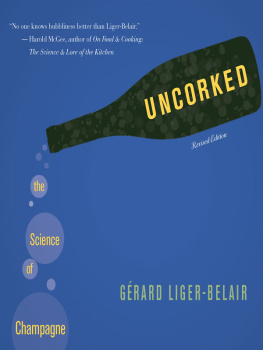
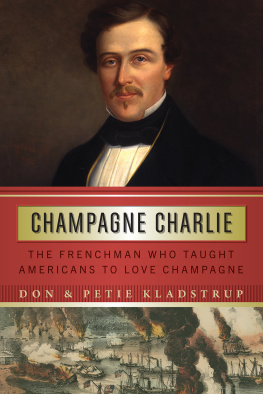

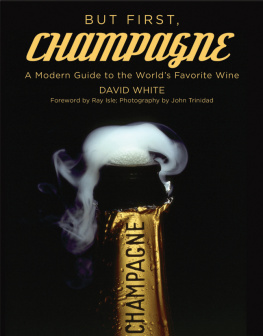


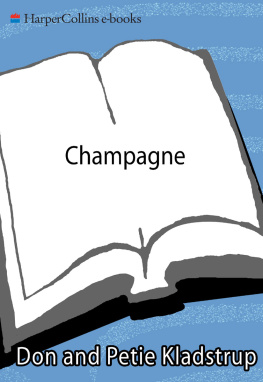
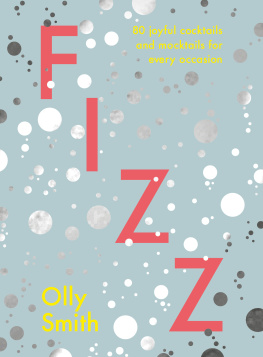
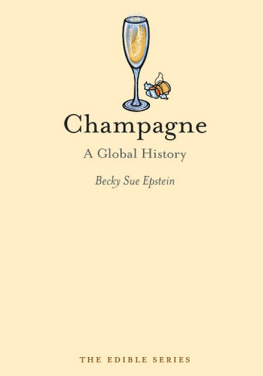
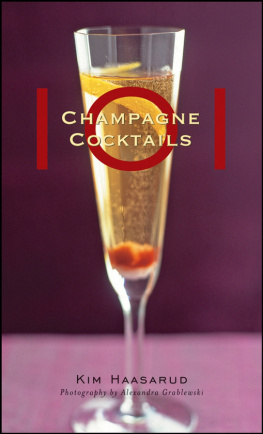
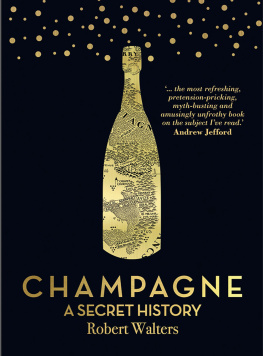
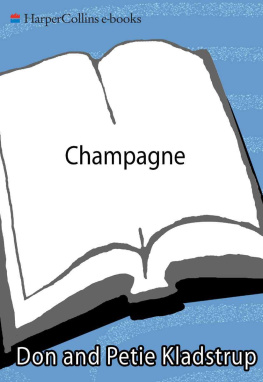
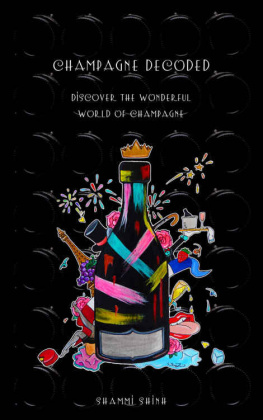

 Princeton & Oxford
Princeton & Oxford